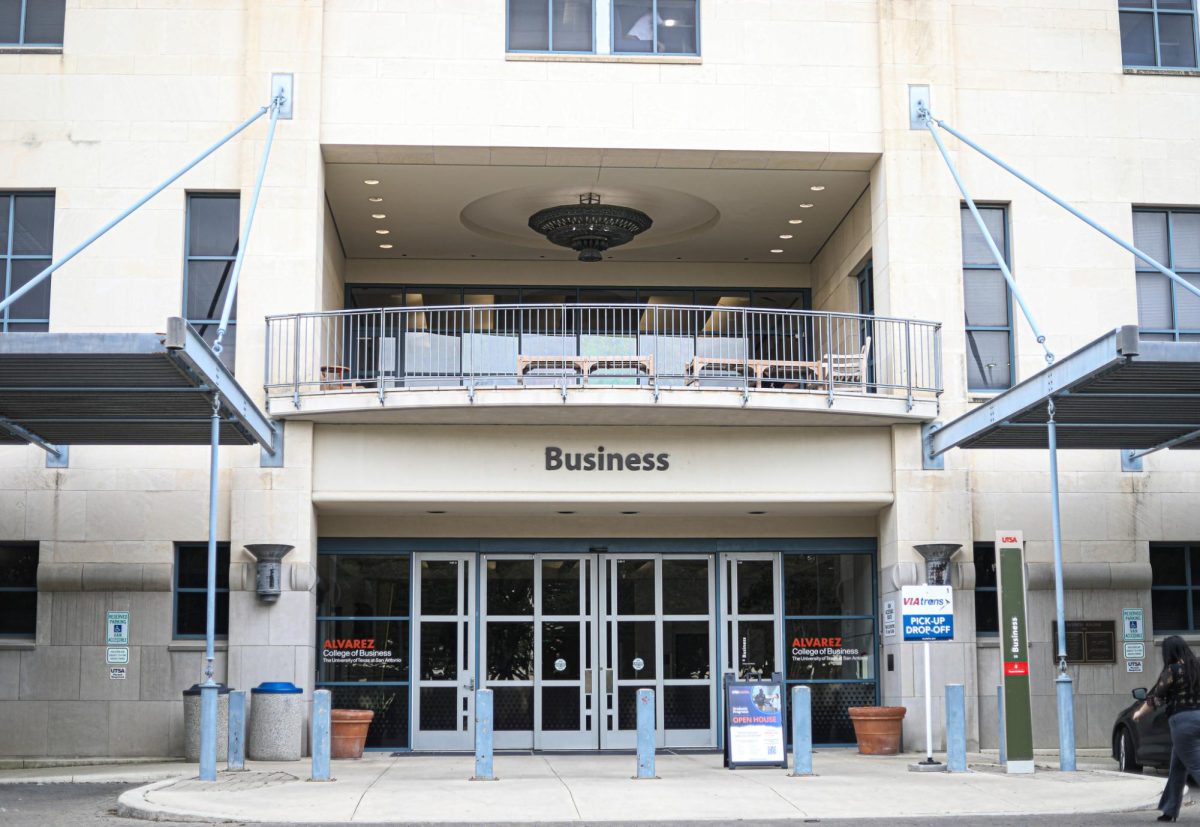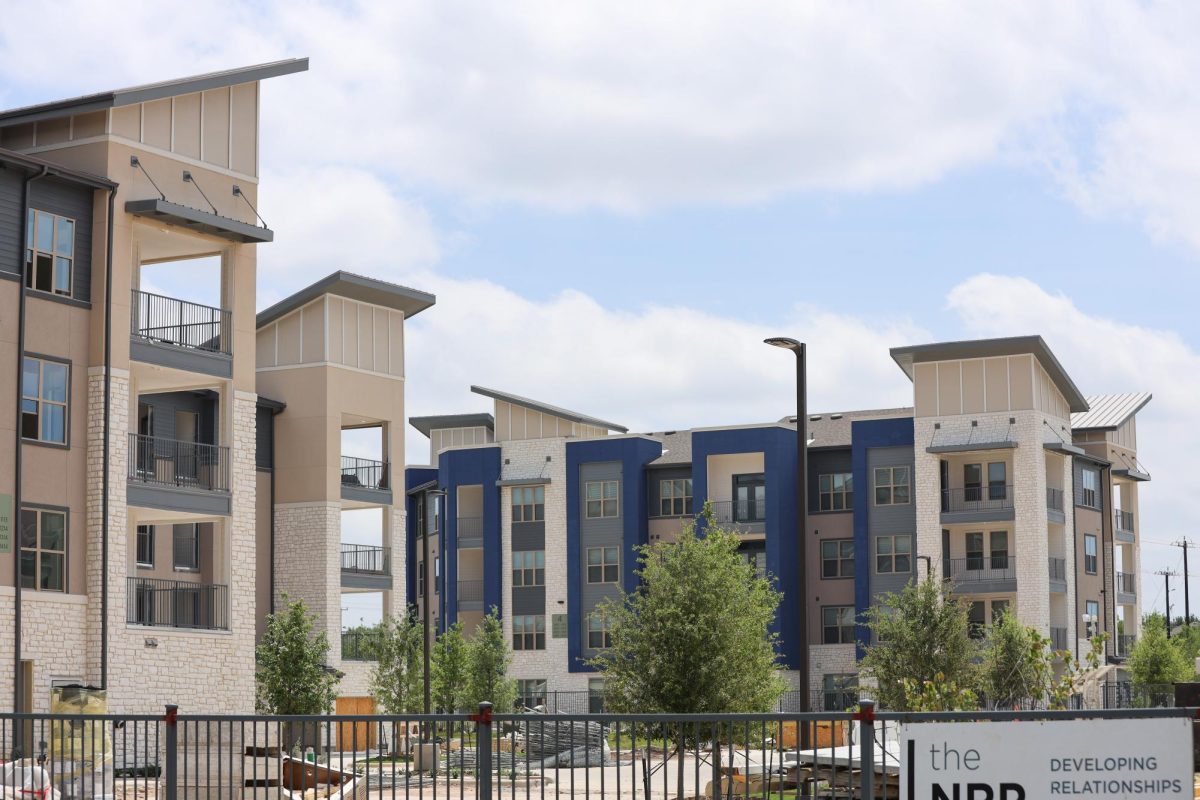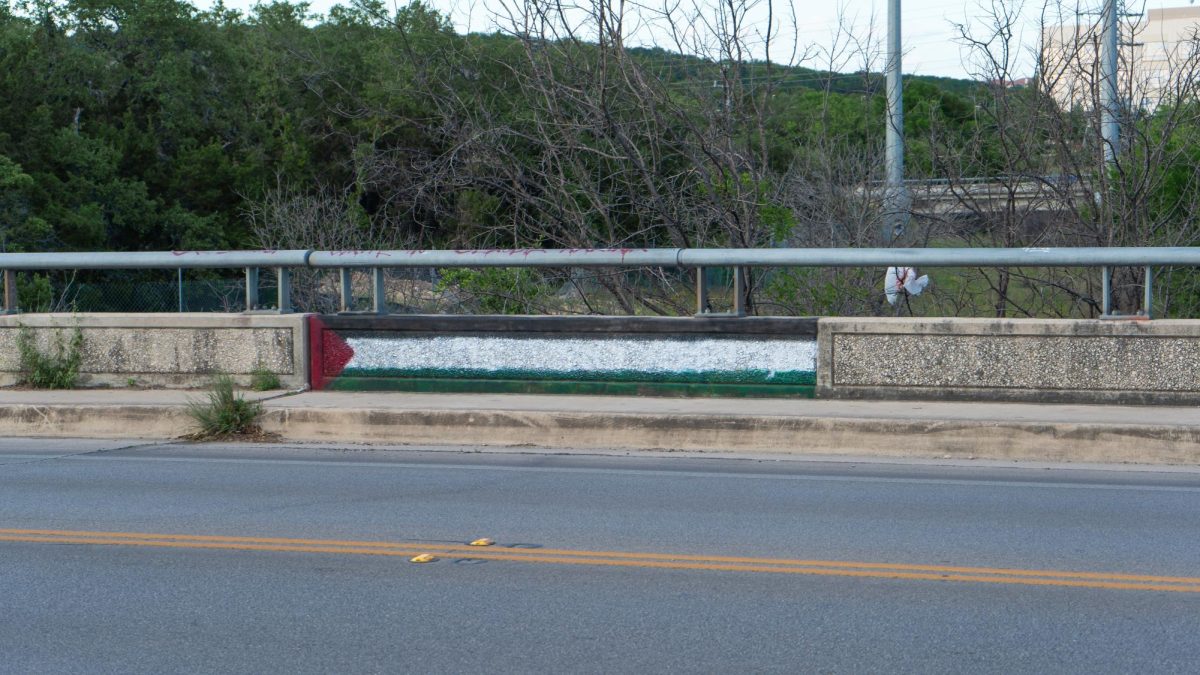
On May 17, UTSA unveiled another component in its drive towards Tier One research status, and the university’s newest effort is its most visual yet.
Officially known as the Advanced Visualization Laboratory, the workspace uses specialized equipment to allow researchers to envision data in ways not possible with ordinary technology.
The MS Building’s Advanced Visualization Laboratory (Vis Lab) features three key interfaces to achieve this goal.
The Vis Lab houses an 82-inch stereoscopic 3-D screen, which will enable users to see three-dimensional models and visual data on a large scale. At an open house showcasing the laboratory, the screen was used to display 3-D models of molecular compounds, though countless other uses are possible.
A second screen inside the Vis Lab is tied to a high sensitivity haptic device, which is essentially a controller that researchers can use to “feel” a computer-rendered object in 3-D space. The device works by providing levels of resistance that match up to the object shown on the screen, giving a very life-like sensation. During the open house, it was used to simulate a surgery, matching on-screen visuals with the appropriate kinds of resistance for skin and organs.
The final and largest interface is a 14-foot-wide array of computer screens, all in sync, used to interpret the very largest images and sets of data. Known as the Visualization Wall, the array of screens can display photos at 98 megapixels of resolution, scaling and zooming into areas of interest at near-instant speed. To achieve this speed with such large files, the screens use a Linux-based computer cluster of 144 CPUs and 2880 GPUs running in unison.
Though the Vis Lab just opened, student researchers have begun to use the facility. “We already have four graduate students and one undergraduate student working in the lab,” Vis Lab Director Dr. Yusheng Feng said. Feng has been involved with the Vis Lab since overseeing a grant proposal in 2008 to fund the creation of the laboratory.
Critically, the Visualization Wall and the other components of the Vis Lab will eventually be networked via high-speed Internet2 connection to the UT Health Science Center at San Antonio.According to Feng, the health science center did not have any input in the creation of the facility. “However, they are pleased that UTSA is building such an advanced Vis Lab and provided two high-resolution animation files (for the open house),” Feng said.
He predicts that researchers at both institutions will be able to use the Vis Lab’s technology to collaborate like never before, and, in particular, medical training will be enhanced for users at the health science center.
“I envision there will be a lot of collaboration between the two institutions in terms of research and training. For instance, robotic surgery simulation and visualization, drug delivery modeling and visualization, and imaging application in neuroscience,” Feng said.
The university also hopes the Vis Lab, which was funded by a $482,667 National Science Foundation grant, will attract top international researchers. “Co-Director Dr. Millwater and I will formulate a plan in the summer (to attract researchers),” Feng said.
Even so, the laboratory was created for more than just research: it can also be transformed into a teaching space with classroom-style seating for 21 students. “The faculty associated with the lab will hold classes that have visualization components in the lab,” Feng said. Built-in videoconferencing technology supports both research and teaching activities.
Though the Vis Lab is managed by the college of engineering, students and faculty from all disciplines of engineering, science, and liberal arts will be encouraged to use the facility. “Of course, to make the Vis Lab available to (all) students is part of the mission,” Feng said.
Feng plans to hold outreach events to attract students interested in visualization and computation.
Students and faculty can learn about the events when information becomes available, or schedule a tour of the Vis Lab, by visiting the laboratory’s website at vislab.utsa.edu.











